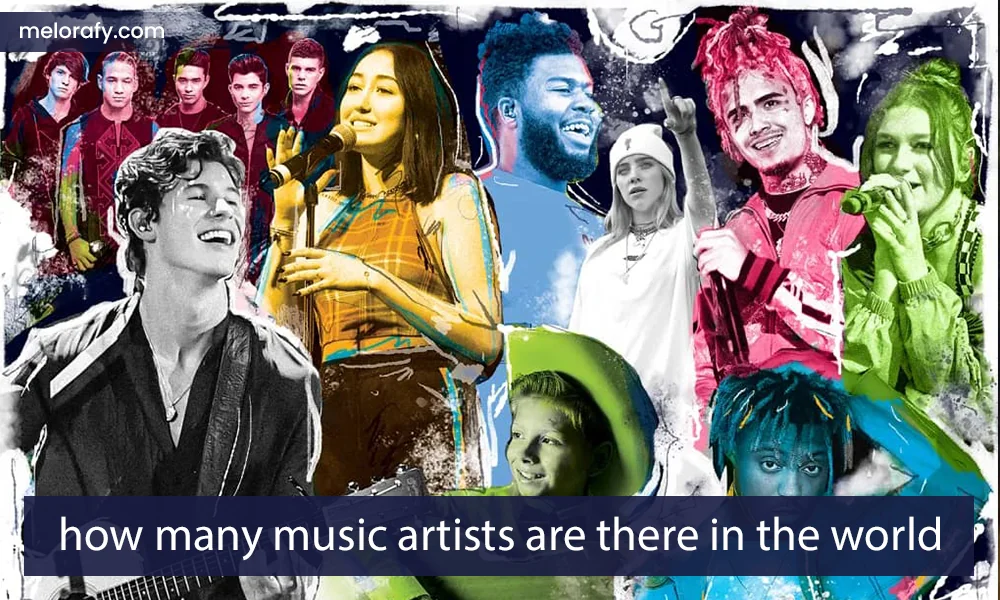
how many music artists are there in the world
In an age where music transcends geographic boundaries and cultural barriers, trying to quantify the exact number of musical artists in the world is like capturing a snapshot of an ever-evolving landscape. The world music scene is a tapestry woven of countless genres, cultures and sounds, each contributing to the richness of the world’s musical heritage. This article from Melorafy embarks on a journey to explore the factors that contribute to such a large number of music artists and shed light on the diversity and dynamism that defines today’s global music industry.
The Challenge of Counting Music Artists
The primary challenge in estimating the number of music artists worldwide lies in the definition of “music artist.” Does it include only those who have achieved commercial success and recognition, or does it also encompass independent artists, street performers, and those who share their music purely out of passion through social media and other digital platforms? In the age of the internet, where barriers to entry in the music industry have significantly lowered, millions of individuals have the opportunity to share their musical talents with a global audience, blurring the lines between professional and amateur.
The Rise of Digital Platforms
Digital platforms such as Spotify, YouTube, SoundCloud, and Bandcamp have revolutionized the way music is created, distributed, and consumed. These platforms allow anyone with a musical idea to share their creations with the world, significantly increasing the number of people who can be considered music artists. As of the last few years, platforms like Spotify boast millions of artist profiles, a number that continues to grow daily.
![]()
Independent Artists and Home Studios
The advent of affordable home recording equipment and software has democratized music production, enabling aspiring artists to record and produce music from the comfort of their homes. This technological advancement has led to a surge in independent music production, with countless artists emerging outside the traditional music industry framework.
The Impact of Globalization
Globalization has played a crucial role in amplifying the voices of music artists from every corner of the globe. Artists from previously underrepresented regions now have platforms to share their music internationally, contributing to the global music ecosystem. This inclusivity has not only increased the number of artists but has also enriched the world’s musical diversity, introducing audiences to a wide range of genres and styles.
Genre Diversity
The music industry encompasses a wide array of genres, from pop, rock, and hip-hop to classical, jazz, and folk music from various cultures. Each genre represents a community of artists, from globally recognized stars to local musicians who play traditional music that has been passed down through generations. This genre diversity further complicates the task of quantifying the total number of music artists, as it spans across commercial, independent, and traditional music forms.
Estimating the Number
While it’s nearly impossible to arrive at an exact figure, industry estimates suggest that there are millions of active music artists worldwide. This estimate includes those who make their full-time living from music, part-time musicians, and those who pursue music as a hobby but share their work publicly.
![]()
Embracing the Infinite
Attempting to pinpoint the number of music artists in the world may be a Sisyphean task, yet it highlights the incredible diversity and dynamism of the global music scene. The true beauty of this vast number lies in the endless variety of musical expressions, each artist contributing their unique voice to the global melody. As technology advances and the world becomes more interconnected, we can only expect this number to grow, bringing more sounds, stories, and cultures into the universal language of music.
In the end, the question of how many music artists are in the world is less about seeking a definitive number and more about celebrating the boundless creativity and connectivity that music embodies. As listeners and fans, we have the privilege of exploring this ever-expanding universe of sound, discovering new music that resonates with our souls, and supporting artists who share their gifts with the world.
Classification of music styles
New Age is a style in music that puts a lot of emphasis on expressing emotions and inner feelings. This music usually has a calm and relaxing content. What is very prominent in these works is a special emphasis on spirituality and spiritual issues. Even some works of this style can be used in cases such as music therapy. Musicians of this style usually have a lot of knowledge and ability and can attract listeners to their works.
Popular music styles
Art Punk, Art Rock, Acid Jazz, Acid Rock, Acid House, Afrobeat, Afropop, Alternative Dance, Alternative Rock, Alternative Country, Alternative Metal, Alternative Hip Hop, Berlin Electronic, Religious Electronic, Americana, Black Metal, Religious Black Metal ( Black Metal), Blues, Beatboxing, Beat Pop, Pub Rock, Iranian Pop, Arabic Pop, Rap, Persian Rap, Religious Rock, Club, Classic Blues, Classic Rock, Classic Country, Kickwalk, Religious Metal, Contemporary Religious Music, Hip Hop , ambient and… all these mentioned items are in all kinds of music styles and are considered popular.
![]()
Traditional and local music styles
Apala, Batukada, Bajan, Bajuro, Balakdri, Bambuko, Bihu, Chumba, Kontiga, Kontinas, Ashiq, Iranian music, Chinese music, Christmas music, Hungarian music, Greek music and…